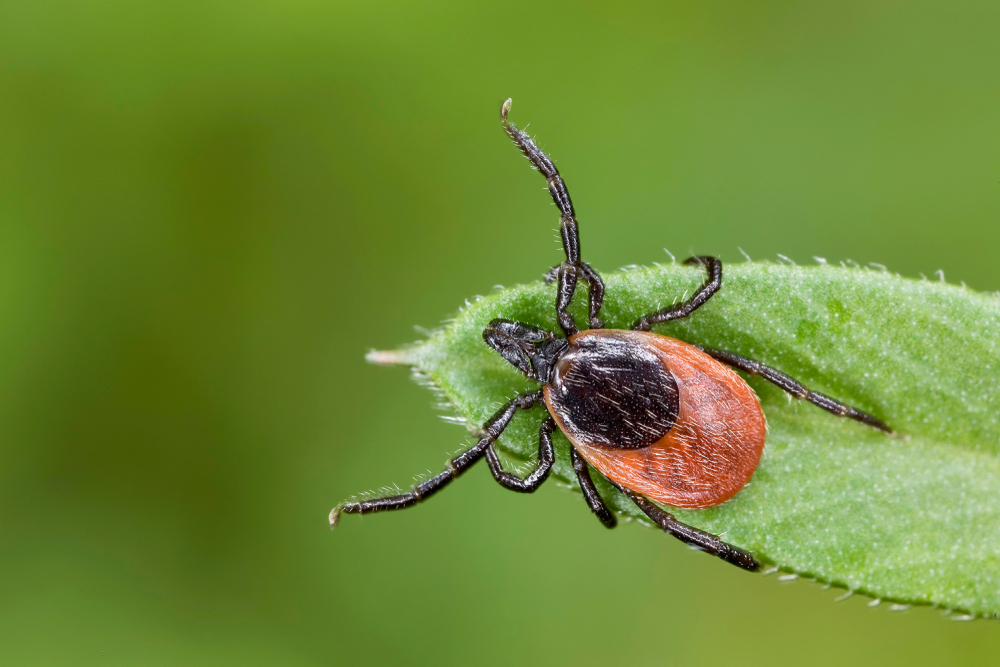

Order a call
 25.04.2018
25.04.2018
Tick-borne encephalitis is a pathological viral disease characterized by the penetration of infection into the human body. Encephalitis rapidly affects the central nervous system. Even if a person consults a doctor on time, one should not lose sight of the frightening consequences of this disease. Tick-borne encephalitis leads to disruption of a person’s physiological health, and in some cases it can lead to disability and death.
Infection with tick-borne encephalitis occurs as a result of the entry into the body of an arbovirus, which is carried by a tick. The virus is transmitted to humans through the insect's suction to the human body along with anesthetic saliva. You can become infected while relaxing in a forest belt, a park, or even on your own plot; in close contact with pets that periodically visit the street. Also, a tick can get onto a person’s body from flowers, tree branches, or the clothes of the interlocutor. Therefore, the threat can lurk everywhere and it is not necessary to visit the forest for this. After drinking unboiled and unprocessed milk from animals such as goats, cows. Many people do not know, but during a period of mass encephalitis tick attacks on animals, the insect can also penetrate into the milk. The virus can enter the blood of a person if he takes and crushes an insect on his body, and then scratches the site of an encephalitis tick bite. At the moment, the carriers of the disease and the encephalitis virus , that is, ticks, are widespread everywhere.
The main time period for tick-borne encephalitis in human skin is late spring, summer and early autumn. It is during this period that the ticks are most active. The incubation period, that is, the hidden period, is 2 weeks. The tick infection lasts for a few seconds, but the consequences of the disease last for a long period of time.
Signs of the disease: severe headache ; a fairly sharp increase in temperature; vomiting reflex; Nausea, severe muscle pain localized in the cervical region, in the shoulders, as well as in the chest and lower back. In some cases, the pain may spread to the limbs. In most clinical cases, pain and discomfort are localized in areas affected by tick-borne encephalitis. A person’s appearance changes – the face becomes pale and sore.
The main risk group for tick-borne encephalitis includes absolutely all residents of both rural areas and large cities. But we can still say that people whose professional activities involve being in the forest in open areas are most susceptible to infection. These could be builders, hunters, foresters, garden workers. Of course, even an ordinary tourist who prefers to relax in a forest area with tents is at risk. Encephalitis tick damage can be prevented. The use and active use of special protection, namely suits that completely cover the human body or clothing that is sold in specialized travel stores. Specialized clothing looks like this: a long shirt with a closed collar and elastic bands at the wrists. And also long trousers that can be tucked into socks and then into boots. A person's head and neck are tied with a scarf. But, naturally, this method is extremely inconvenient for those who are planning a one-time vacation in the forest.
If you are outdoors, periodically examine yourself for tick-borne encephalitis on your skin.
Head of the Arkalyk city branch
of the RSE branch at the RSE "National Center of Expertise" of the Kozhakhmetova
Asel Zhumagalievna Kozhakhmetova of the Ministry of Health of the Republic of Kazakhstan of the Ministry of Health of the Republic of Kazakhstan for the Kostanay region